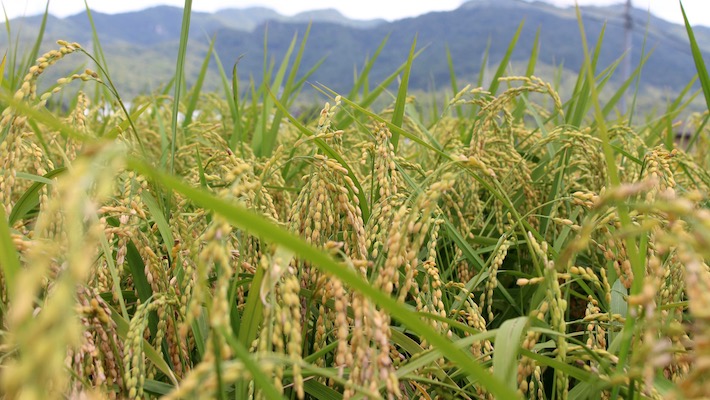
Harima Archives
2022.03.18 Good Quality Sake Rice Is Essential

This Rice Is Made for Sake
The main ingredient for sake is rice, the staple food of the Japanese people. Rice used to make sake is called shuzokotekimai (sake rice) to distinguish it from rice culinary rice. However, don’t be mistaken, as sake rice can still be cooked and eaten like other types of rice. Some farmers ship only the highest quality sake rice and eat the rest as sushi or rice balls. So, what are the differences and characteristics between sake rice and rice cooked and eaten?
The Brewing Aptitude of Rice
First of all, the main difference between sake rice and culinary rice is that sake rice is brewed. When sake is brewed, the rice is broken down into glucose by koji-kin (koji mold), fermented by yeast to produce alcohol. Rice that is easy to brew has a “brewing aptitude.”
The Shinpaku Must Be Large and Oval-Shaped
Rice considered having a brewing aptitude must yield a high manifestation of shinpaku. The shinpaku is mainly made up of starch and is the core of the rice. A large and linear grain polishes exceptionally well. It looks cloudy and white because the starch tissue is rough and has gaps, causing light to be diffusely reflected. This is where the koji mold enters, takes root, and multiplies (breaks down), making it easier to break down into sugar, facilitating smooth fermentation.
On the other hand, it is also known that if the shinpaku is too large, it can easily break, making it difficult to polish.
Large grains are a must
Another critical factor here is the size of the actual rice grain. Proteins and minerals on the surface of rice may provide a certain amount of umami when used for culinary rice, but in the case of sake brewing, it can produce a bitter, off-putting taste. To remove these extra elements, sake brewing involves rice polishing. Compared to culinary rice, sake rice undergoes a high level of polishing, which draws more of the outer layer of the rice. Since this high level of polishing mills the dried rice more than usual, small grains can break apart.
Therefore, the larger the rice grain, the better.
The Tallness of the Rice Plant
Yamada Nishiki rice plants are characterized by their tall stature. Typically, the shorter the plant, the less likely it will fall over when strong winds blow, and the easier it will grow. However, the rice plant needs to grow to a certain extent for sake rice. The longer it grows, the more the nutrients stored by the leaves will be brought to the rice grains, making them more prominent. To prevent tall rice plants from collapsing, soil with high levels of silicic acid is used, resulting in rigid and firm rice plants.
In addition, soil with clay stores minerals and other nutrients so that rice plants can grow well inside.



